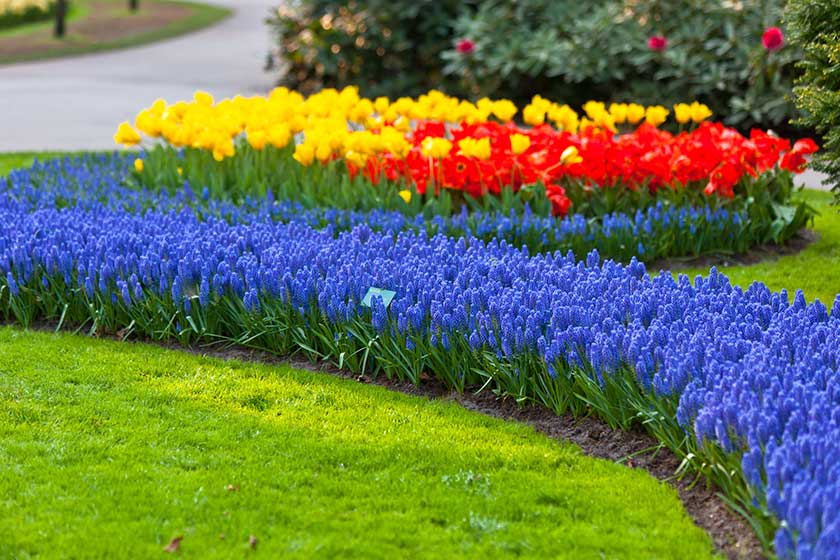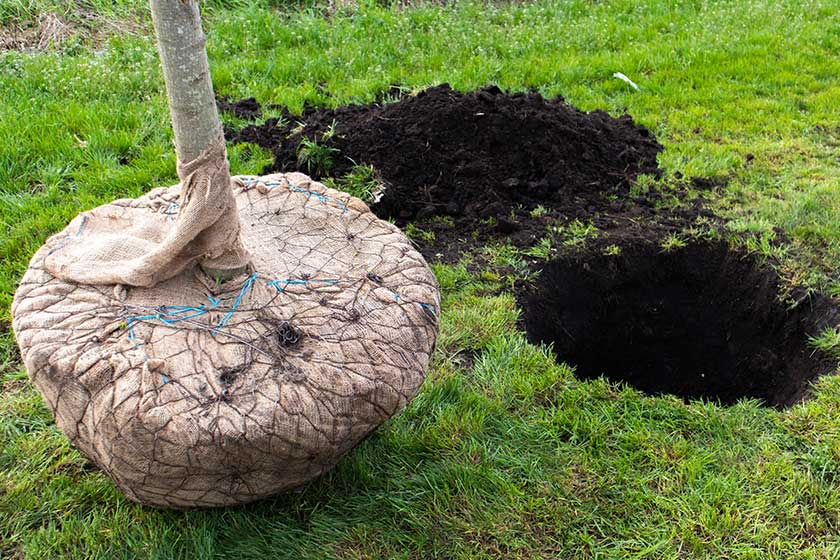Installing a flower bed can bring vibrant color and life to your landscape. Whether you’re creating a lush garden in your backyard or adding curb appeal with a front flower bed, the process can be both exciting and overwhelming. One of the first questions homeowners ask when planning a flower bed installation is: What is the cost? The total price for flower bed installation depends on several factors, including the size of the bed, the materials used, the type of flowers, and the level of design complexity.
In this article, we will break down the costs involved in installing a flower bed, from basic setups to more intricate designs. By the end, you will have a clear understanding of the price range for flower bed installation services and the factors that contribute to the final cost.
Understanding the Basics of Flower Bed Installation
A flower bed is a designated area within your garden or yard where flowers, plants, or shrubs are cultivated. Flower bed installation involves not only planting flowers but also preparing the ground, choosing the right soil, and adding any necessary landscaping features like mulch or edging.
The process can vary from a simple installation of flowers into an existing garden to a more extensive project that requires clearing space, shaping the area, and adding custom elements. The complexity of the project will determine its cost.
Key Factors Affecting Flower Bed Installation Cost
Size of the Flower Bed
One of the most significant factors that affect flower bed installation cost is the size of the area you wish to plant. Naturally, the larger the area, the more materials and labor will be required, which will increase the price. For a small flower bed, you might pay less because less soil, fewer plants, and less work will be involved. On the other hand, a large flower bed that stretches across your yard or along your driveway will cost significantly more due to the larger space that needs to be prepared.
While some flower bed installation companies charge by square footage, others may offer flat-rate prices for standard sizes. As a general guideline, flower bed installation costs per square foot typically range from $4.50 to $13.50.
Type of Flowers and Plants
The type of flowers and plants you choose for your flower bed will also influence the overall cost. Some flowers are more expensive than others due to their rarity, demand, and care requirements. For example, roses, calla lilies, or orchids can be quite pricey, while flowers like marigolds or sunflowers are typically more affordable. Native plants are generally a better option since they thrive in your local climate and require less maintenance.
On average, flower prices can vary widely. For example:
- Marigold: Around $4 per plant
- Lobelia: Around $7 per plant
- Sunflower: Around $12 per plant
- Rose: Around $24 per plant
The more expensive the flowers, the higher the cost of installation. Additionally, some homeowners opt to add shrubs or small trees, which can further increase the cost.
Flower Bed Design Complexity
Flower bed design can range from simple and straightforward to complex and creative. A basic design may involve simply digging a rectangular or circular bed, placing the plants, and adding some mulch. However, more elaborate designs that incorporate multiple layers of flowers, intricate patterns, or mixed planting with shrubs, perennials, and seasonal flowers will increase the cost.
Custom designs, such as raised flower beds, garden borders, or beds with stone features or edging, can significantly increase the overall price. Specialized designs, such as flower beds with winding shapes or beds featuring themed arrangements, may also be more expensive. If you plan on adding any decorative features, such as trellises, fountains, or sculptures, these elements will also increase the overall installation cost.
Soil and Ground Preparation
The soil quality in your flower bed area plays an essential role in the success of your plants. If your current soil is not ideal, additional work will be required to improve it. For example, you might need to remove grass, weeds, or other plants that may compete with your flowers for nutrients. If the soil is too compact, it might need to be aerated or tilled.
Soil amendments, such as compost or other fertilizers, can also increase costs. They help improve the soil’s fertility and texture, making it more suitable for planting. Topsoil replacement, particularly for areas with poor or rocky soil, may also be required, adding an additional layer of cost.
The average cost to condition or replace the soil can range from $103 to $343, depending on the size of the flower bed and the materials used.
Edging and Mulching
Flower bed installation usually involves adding some form of edging or border to define the shape of the bed and keep the plants contained. The edging material chosen will have a significant impact on the overall price. Common edging materials include:
- Plastic: Affordable and easy to install, costing around $0.50 to $3.25 per linear foot
- Wood: A rustic look with costs ranging from $2.90 to $8 per linear foot
- Stone or Brick: A more durable and aesthetic option, costing anywhere from $2.50 to $10 per linear foot
- Metal: Steel or aluminum edging can cost between $1.70 and $4.70 per linear foot
Mulch is another key material used to improve the soil and prevent weeds from growing. Mulching also helps to retain moisture, keeping your flowers hydrated during dry periods. The cost of mulch typically ranges from $30 to $110 per cubic yard, or about $3.25 to $6.50 per bag.
Labor Costs
Labor is one of the major cost components in flower bed installation. Depending on your location and the company you hire, the labor costs for flower bed installation services can range from $50 to $110 per hour. Labor costs cover the time spent preparing the area, installing the flowers, adding any soil amendments, and completing finishing touches such as mulching and edging.
While the total labor cost will depend on the size and complexity of your flower bed, more intricate designs or large flower beds will require more time and expertise, thus increasing the labor cost. Some flower installation companies may offer a flat-rate fee for flower bed installation, which may be more economical for straightforward projects.
Location and Accessibility
The location of your property can also affect flower bed installation cost. For example, flower bed installation in an urban area may cost more than in a rural area due to higher labor rates and increased transportation fees. Additionally, if your flower bed is in a hard-to-reach area, such as on a steep slope or near obstacles like trees or fences, the installation process may be more challenging and labor-intensive, adding to the cost.
It is also important to consider the local climate when selecting flowers for your flower bed. Some areas may require additional care to ensure that plants thrive in the local conditions, which may result in higher costs for specialized flowers or soil amendments.
Additional Features
Many homeowners choose to enhance their flower beds by incorporating additional features like trellises, fencing, or decorative stones. These features not only add to the visual appeal of your flower bed but also require extra time, materials, and expertise to install. The cost of these additional features varies greatly depending on the complexity and materials used.
For example, trellises can cost anywhere from $25 to $100, while decorative stones or pebbles can add $100 to $300 to the project. These features are typically optional, but they can contribute to the overall cost if desired.
DIY vs. Professional Flower Bed Installation
When it comes to installing a flower bed, many homeowners choose between DIY and hiring a professional company. While DIY flower bed installation can save you money on labor costs, it requires significant time and effort, as well as knowledge of soil preparation, plant selection, and garden design. For those with limited gardening experience, the quality of the finished product may not meet expectations.
On the other hand, hiring a professional flower installation company ensures that your flower bed is designed and installed correctly, with all necessary elements like soil amendments, mulching, and edging included. While the upfront cost is higher, the result is often a more polished and long-lasting flower bed that enhances the beauty and value of your property.
Pros and Cons of DIY Flower Bed Installation
Installing a flower bed yourself can be an appealing option for homeowners who want to save on labor costs and enjoy the hands-on experience. However, several factors must be considered before deciding if DIY installation is the best route for you.
Advantages of DIY Flower Bed Installation
- Cost Savings: One of the most obvious benefits of DIY flower bed installation is the potential for significant labor savings. By taking on the project yourself, you can avoid spending $50 to $110 per hour on professional services. Your only costs will be for materials such as soil, flowers, mulch, and edging, which can add up to a lower overall price.
- Personal Satisfaction: Many homeowners enjoy the satisfaction of creating their own landscape features. There is a sense of accomplishment that comes from designing and installing a flower bed with your own hands. For those who love gardening, the process can be rewarding and fun.
- Full Control: DIY installation gives you complete control over the design and layout of the flower bed. You can select the flowers and plants you love, design the bed to fit your vision, and make changes as you go. There is no need to worry about adjusting to someone else’s design or schedule.
- Customization: When you handle the installation yourself, you have the freedom to make every decision, from the type of flowers to the edging material. This flexibility allows you to create a flower bed that perfectly matches your personal style and the look you want for your yard.
Disadvantages of DIY Flower Bed Installation
- Time-Consuming: Flower bed installation is not a quick project. From preparing the soil to planting the flowers and adding finishing touches, the process can take several days or even weeks, depending on the complexity. This can become a significant drawback if you have a busy schedule or lack the time to dedicate to the project.
- Lack of Expertise: Unless you have gardening experience, it may be challenging to select the right plants, properly amend the soil, or design a balanced flower bed. Mistakes can lead to poor plant growth, overcrowding, or soil imbalances, resulting in a garden that looks less than ideal.
- Additional Costs: Although DIY installation can save on labor costs, it often requires the purchase of specialized tools and materials that you may not have on hand. Items such as a garden rake, trowel, shovel, wheelbarrow, and edging materials can add up quickly. Additionally, the time spent researching, planning, and executing the project can become costly in terms of effort and frustration.
- Risk of Poor Results: Without the help of a professional, your flower bed may not turn out as you envisioned. Soil quality issues, improper plant spacing, and inadequate drainage are just a few examples of problems that can arise during DIY installations.
How to Choose a Professional Flower Bed Installation Company
For many homeowners, the advantages of hiring a professional flower bed installation company outweigh the costs. Here are some tips to help you choose the best company for your needs:
Research Experience and Reputation
Before hiring a flower bed installation company, research their experience and reputation. Look for companies with a proven track record of successful flower bed installations. Check customer reviews, testimonials, and photos of completed projects to get an idea of the quality of their work.
Get Multiple Quotes
Getting quotes from multiple flower installation services to compare pricing and services is always a good idea. Be sure to ask for a detailed breakdown of costs, including labor, materials, soil amendments, and any additional features such as edging or mulch. This will help you make an informed decision.
Check for Proper Licensing and Insurance
Make sure the flower bed installation company is properly licensed and insured. A reputable company will have the necessary licenses to operate in your area and carry liability insurance in case of any accidents or damage during the project. This will provide peace of mind knowing that you are protected if anything goes wrong.
Discuss Design Ideas and Customization
A good flower bed installation company will work with you to design a flower bed that matches your vision and complements your landscape. Discuss your ideas, preferences, and any specific needs you may have, such as creating a low-maintenance garden or choosing drought-resistant plants. A professional company will guide you in making decisions that best suit your property and style.
Inquire About Maintenance Services
Many landscaping companies offer ongoing maintenance services, such as watering, weeding, and plant care, in addition to flower bed installation. If you are looking for a low-maintenance option, ask about these services to keep your flower bed looking its best without additional effort.
How Covenant Landscapes Can Help
At Covenant Landscapes, we specialize in creating beautiful, customized flower beds that enhance the aesthetics of your property. Our expert flower installation services in Nashville, TN, ensure that your flower beds are designed and installed with care and precision.
Let us help you create a vibrant and attractive flower bed that adds charm and beauty to your landscape.



